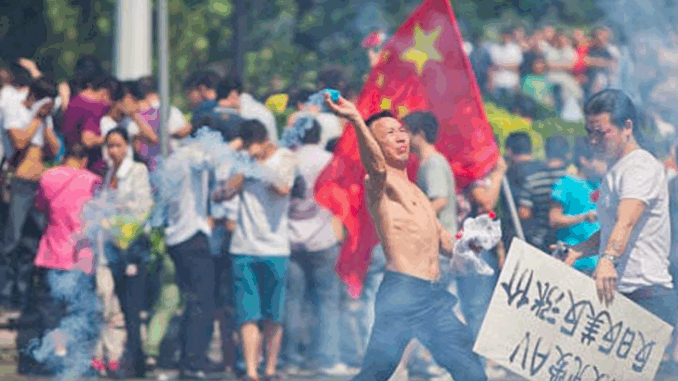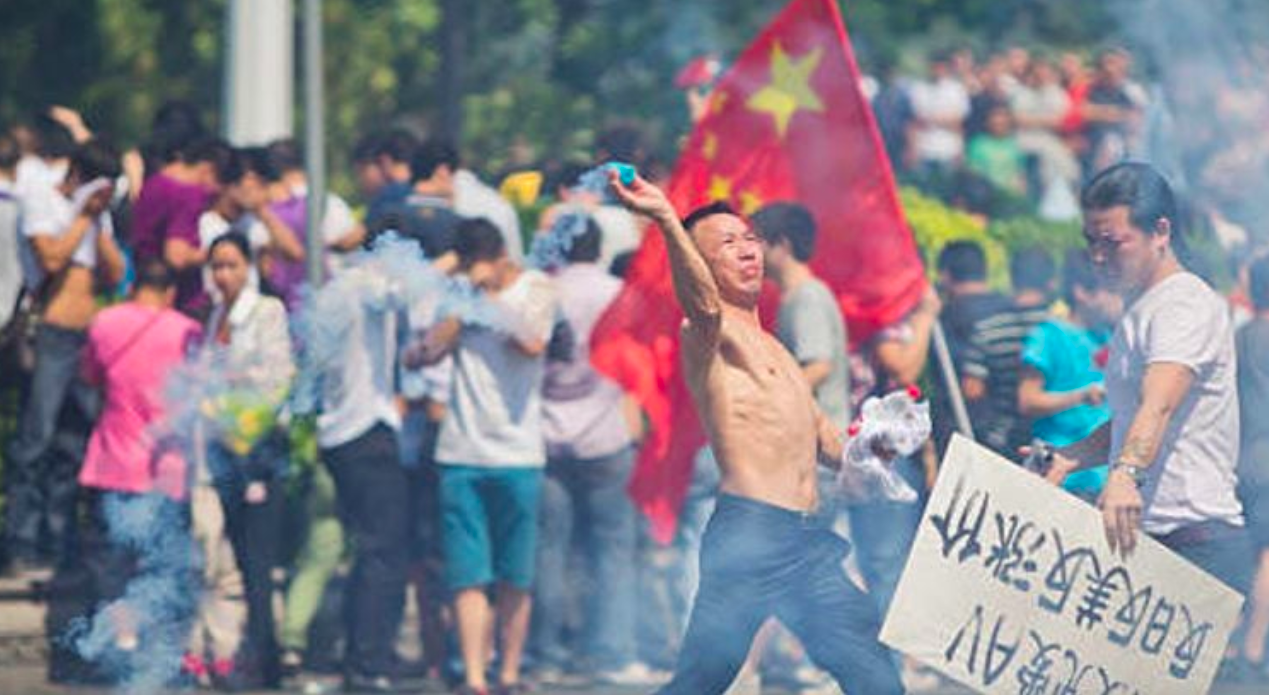
Riots are sweeping across China as President Donald Trump’s punishing tariffs batter the nation’s export-reliant economy—forcing factories to shutter, leaving millions unpaid, and sparking mass unrest that Western media appears determined to play down.
From industrial zones near Shanghai to the remote edges of Inner Mongolia, workers have taken to the streets demanding back pay and furiously denouncing mass layoffs that threaten to plunge the nation into poverty.
The unrest comes amid a catastrophic plunge in Chinese export orders, now at their lowest levels since the brutal lockdowns of the COVID-19 era — a collapse sending shockwaves through the nation’s factory floors.

BYPASS THE CENSORS
Sign up to get unfiltered news delivered straight to your inbox.
You can unsubscribe any time. By subscribing you agree to our Terms of Use
Senior Chinese Communist Party officials are reportedly gripped by fear that the escalating protests could mark the beginning of the end for Xi Jinping’s iron grip on power.
FBI Insider: Epstein Victims Are Being Murdered to Protect VIP Pedophiles
“Some in the upper echelons of the Party are whispering what was once unthinkable,” said a source close to the leadership. “Xi’s authority is no longer absolute.” Watch:
Outside an LED manufacturing facility near Shanghai, thousands of workers protested this week over unpaid wages dating back to January.
Newsmax reports: In central China’s Dao County, another protest erupted outside a sporting goods store that had abruptly closed its doors without compensating its employees.
In Tongliao, a city in the northeast, construction workers climbed onto rooftops and threatened suicide if wages weren’t delivered.
“They were making from us a trillion dollars a year. They were ripping us off like nobody’s ever ripped us off,” Trump said. “They’re not doing that anymore.”
Goldman Sachs estimates that as many as 16 million jobs could be lost in China if the tariffs continue to erode the country’s industrial base.
The Wall Street Journal reports that Huang Deming, a garment exporter in southern China, has already laid off 30% of his staff after losing three U.S. clients. Qian Xichao, a textile factory manager, described cutthroat conditions in the domestic market.
“To be frank, personally speaking, all we can do is go out and look for new opportunities,” Qian told the Journal.
The labor unrest mirrors the protests in 2022 during President Xi Jinping’s strict COVID-19 lockdowns. At the time, government forces suppressed demonstrations through violent crackdowns. Analysts expect similar responses now as economic instability threatens the regime’s control.
“Xi today has the same mentality as Mao. His bottom line is that no major crisis will be allowed to endanger his hold on power,” a Chinese government adviser told the Journal.
The Trump administration’s tariffs — reaching as high as 145% on Chinese goods — have sharply curtailed trade flows. CBS News reports that major U.S. retailers are already warning of impending supply shortages.
China has imposed up to 125% tariffs on American exports but is quietly exempting certain U.S. products, informing companies discreetly to mitigate the impact of the trade war with Washington.
Meanwhile, at the Port of Los Angeles, which handles roughly 40% of all Asian imports, container volumes decreased by 10% last week compared to the same period a year earlier.
“We are now beginning to see the flow of cargo to the Port of Los Angeles slow,” said Eugene Seroka, the port’s executive director, during an April 24 meeting of the Los Angeles Board of Harbor Commissioners. “It’s my prediction that in two weeks time, arrivals will drop by 35%,” he added.
While other nations have received a 90-day pause on the tariffs as they negotiate with the U.S., China remains excluded from any such reprieve.
